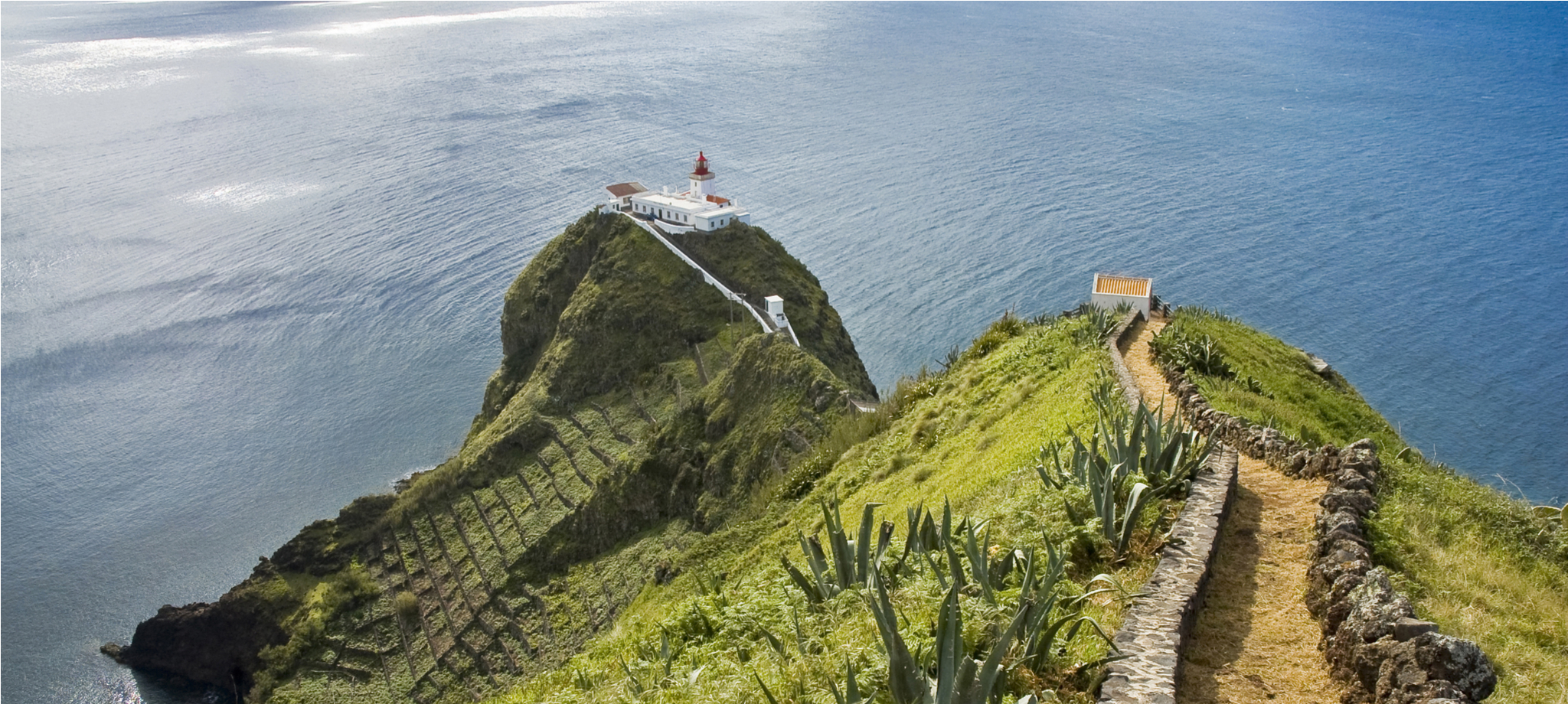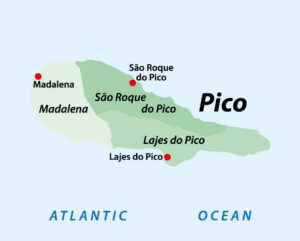Geography of Pico Island, Azores
Pico Island, part of the central group of the Azores archipelago, is one of the most geologically fascinating islands in the region. Dominated by its iconic volcanic peak, Mount Pico, the island is home to diverse landscapes shaped by both volcanic and tectonic activity. Pico’s unique geography, marked by steep cliffs, expansive lava fields, and fertile plateaus, offers visitors breathtaking scenery and insight into the island’s volcanic origins.
For reference, we leave here the Pico Island’s map:
Pico Island population and capital
Pico Island has a population of approximately 14,000 residents, spread across several small towns and villages. The island’s administrative capital is Madalena, located on the western coast, which serves as the economic and cultural hub. Madalena is also the main point of access to the island, with ferry connections to neighboring Faial Island and an active port. Despite its small population, Pico offers a vibrant community life, rich in culture, traditions and festivals.
How big is pico island?
Pico Island, named after its towering volcanic peak, has an elongated, oblong shape. The island stretches 26 miles (42 km) in length and reaches a maximum width of 9 miles (15.2 km), covering a total area of 173 square miles (447 km²). Pico is the second-largest island in the Azores and forms part of the “Triângulo” or “Triangle” islands, along with Faial and São Jorge, with which it shares close geographical proximity.
These three islands are closely connected by both ferry routes and shared geological history. Pico lies only 4.5 nautical miles from Faial and 11 miles from São Jorge, making it easy for visitors to travel between these islands and explore the unique landscapes and cultures of each.
At Azores.com we have the perfect solution: Multi-Island Private Guided Tours! Check them out!
The proximity between Pico and its neighboring islands has fostered a shared maritime culture. The waters between the islands are not only rich in marine life, making them ideal for whale watching and fishing.
Mount Pico: the dominant feature
At the heart of Pico Island is Mount Pico, a dormant stratovolcano that stands at an impressive altitude of 7,715 feet (2,351 meters). It is not only the highest point in the Azores but also the tallest mountain in all of Portugal. Mount Pico’s volcanic cone dominates the island’s landscape and is a defining feature of its geography.
The slopes of the mountain gradually descend to the island’s plateau, where you will find secondary volcanic cones, lava fields, and unique geological formations. These volcanic features highlight Pico’s volcanic past, which has shaped the island’s terrain over millions of years.
Cliffs and coastline
The coastal areas of Pico are defined by towering cliffs that drop dramatically into the Atlantic Ocean, particularly along the island’s north and southeast coasts. These cliffs are interspersed with lava formations and natural pools formed by volcanic activity, creating a rugged and picturesque coastline.
In contrast, some of Pico’s western regions feature more moderate slopes, allowing for agricultural development and the growth of the island’s famous vineyards. These unique vineyards, planted on lava stone and protected by traditional dry-stone walls, are recognized as a UNESCO World Heritage site.
At azores.com we have tour packages that include exploring these natural wonders. Check these packages: Azores Hiking Tour, and Self-Drive Pico tour package.
Flora and fauna of Pico Island
Pico’s volcanic soil, combined with its mild and temperate climate, provides fertile ground for various plant species. The island is home to lush forests, meadows, and its iconic vineyards. The unique “lava landscape” of Pico is also dotted with moss, ferns, and endemic species that thrive in the volcanic environment.
Among the most important inhabitants of Pico’s meadows are the cows, which play a significant role in the island’s agricultural economy. Pico’s cattle farming is renowned for producing high-quality dairy products, including the famous Pico cheese. These cows graze on the island’s rich volcanic soil, contributing to the island’s dairy industry, which is a cornerstone of the local economy.
In addition to cheese and wine, Pico Island’ gastronomy is very rich and worth trying!
In addition to its agricultural significance, Pico’s meadows and pastures also provide an idyllic setting for nature enthusiasts. Birdwatchers will be delighted to find numerous species of migratory and endemic birds, particularly in the island’s western and central regions.
Pico’s waters are rich in marine biodiversity, providing habitats for dolphins, whales, and various species of fish. This makes Pico a prime location for whale watching and marine life observation, activities that attract nature enthusiasts from around the world.




